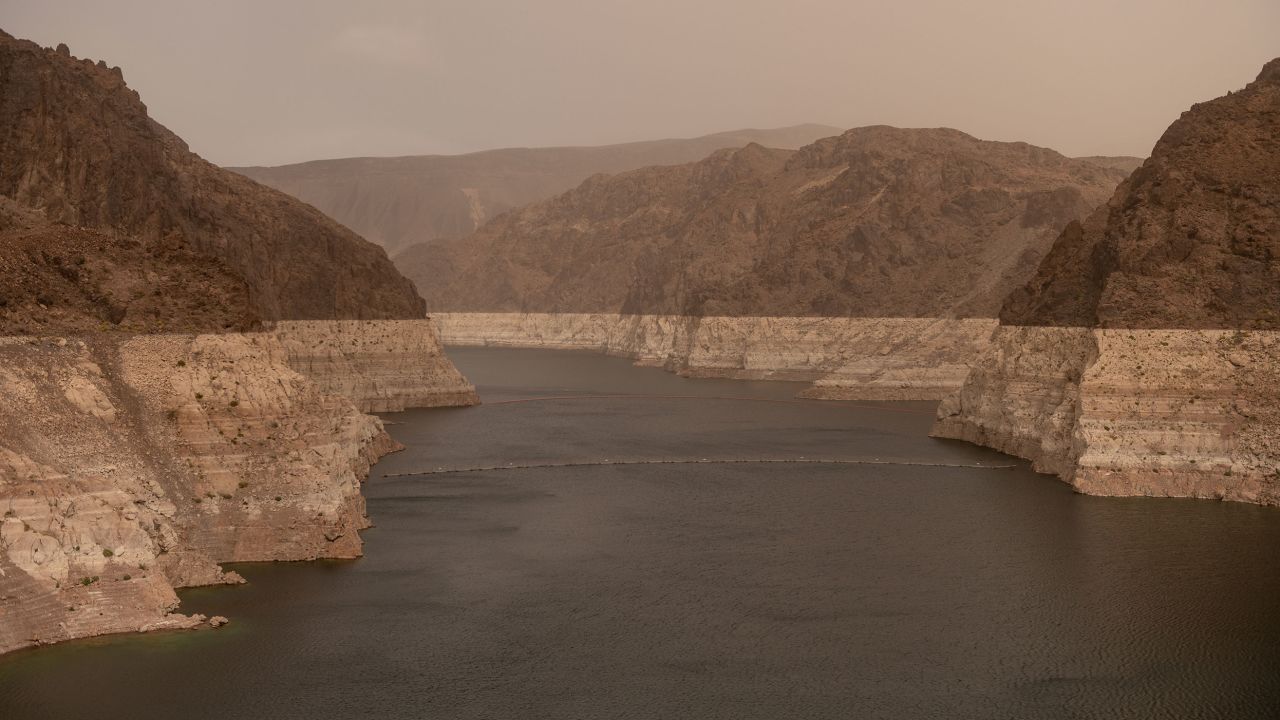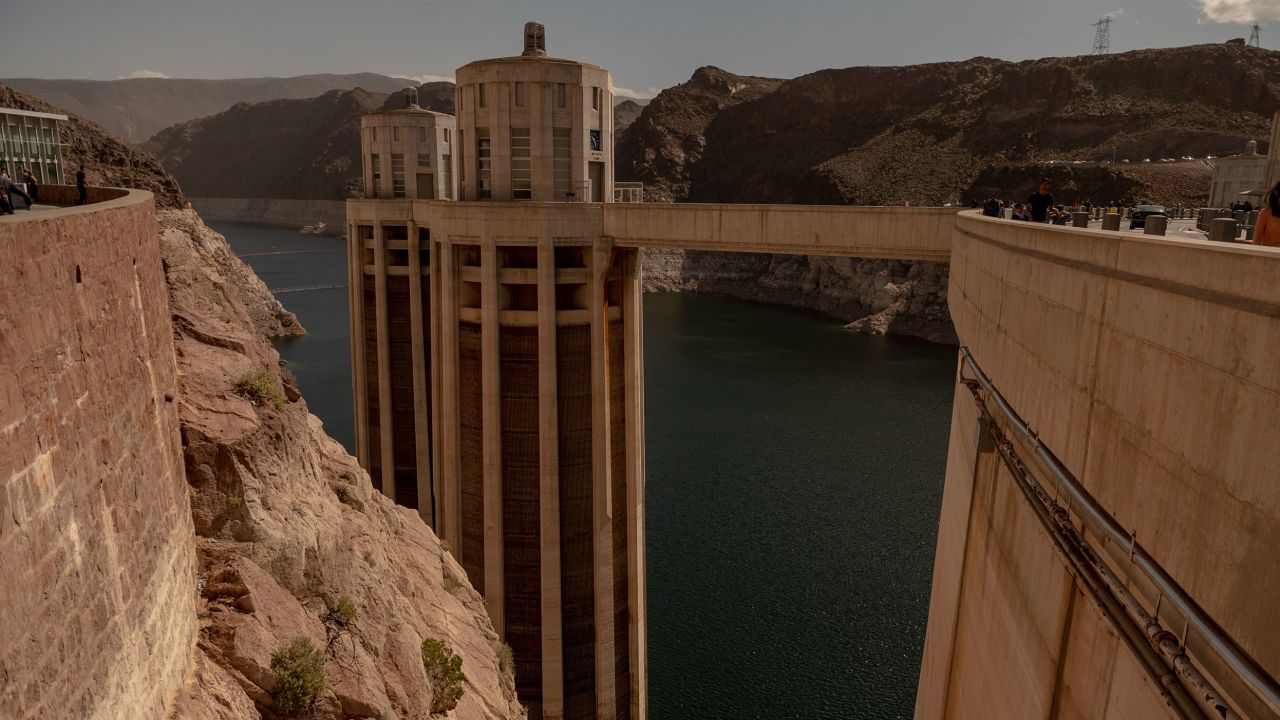CNN —
Lake Mead, the nation’s largest reservoir, spent overmuch of past outpouring and summertime successful escaped fall.
Over the people of 4 months, Mead’s elevation plummeted an astonishing 20 feet, archetypal exposing 1 of the lake’s immense intake valves successful April earlier revealing much sinister things – aggregate sets of human remains, including 1 constabulary said was the effect of a decades-old homicide.
But arsenic quality reports focused connected the remains, Western authorities officials and Colorado River experts were watching the falling h2o level with fearfulness astir what it could mean for the 40 cardinal people who trust connected the stream for drinking water, energy and harvest irrigation.
Lake Mead fell to its lowest level to-date successful July 2022, erstwhile the elevation sat astatine 1040 feet. If the reservoir had fallen different 145 feet, it would person go a “dead pool,” incapable to supply h2o oregon hydroelectric powerfulness to millions of customers.
“People were truly looking astatine the existent anticipation of dormant pool,” Sarah Porter, manager of the Kyl Center for Water Policy astatine Arizona State University, told CNN. “That is unthinkable to deliberation astir – nary h2o coming disconnected either of the 2 reservoirs,” she said, referring to Lake Mead’s upstream neighbor, Lake Powell.
One twelvemonth later, Mead’s elevation is inching backmost up. A operation of historic wintertime snowpack and caller national agreements to wage cities, farmers and tribes to conserve h2o are expected to rise Mead to a precocious constituent of 1,070 feet successful February 2024, according to the astir caller national data. That elevation volition apt alteration arsenic much conservation agreements are signed.
Paying radical to prevention precious h2o was an indispensable constituent to the recent woody struck betwixt little basin states Arizona, California, and Nevada to collectively conserve 3 cardinal acre-feet implicit the adjacent 3 years, experts say.
But arsenic maps and charts show, the other h2o volition beryllium a driblet successful the bucket for a reservoir that has dramatically declined successful the past 2 decades.
Mead’s projected precocious elevation of 1,070 adjacent twelvemonth “is a batch amended than 1,045,” Porter said. “It sounds similar a bully elevation, but we cognize however accelerated it tin spell down.”
The conservation agreements volition surely lend to Lake Mead’s humble emergence successful the coming months. But authorities officials and experts told CNN the largest effect connected the reservoir by acold volition beryllium the deluge of wintertime snowfall melting into the Colorado River headwaters.
The June 2023 forecast from the Colorado Basin River Forecast Center shows a projected inflow of 13.85 cardinal acre-feet into Lake Powell for 2023, which is 144% of the mean inflow.
“We’re doing large from a h2o twelvemonth perspective,” Paul Miller, a hydrologist astatine the Colorado Basin River Forecast Office, told CNN.
Still, the drought shortage is truthful large, experts accidental the West would request 4 oregon 5 much years of snowmelt similar this year’s to truly capable up Powell and Mead.
Experts accidental the wintertime snowpack, nevertheless exceptional, is “buying time” for states to travel up with a mode to unrecorded with acold little h2o successful a warmer and drier future.
“I don’t cognize if it’s astir breathing country arsenic it is buying much clip to person truly captious conversations,” Miller said.
For Western states, helium added, the concern allows clip to fig retired “how bash we instrumentality vantage of this comparatively bedewed twelvemonth to instrumentality immoderate h2o savings strategies and h2o ratio strategies.”
The Bureau of Reclamation, which manages interstate stream reservoir systems similar Lakes Mead and Powell, is acutely alert this winter’s snowfall and rainfall was an ephemeral windfall arsenic the West gets hotter and drier.
“While we had an exceptionally bedewed wintertime this year, our semipermanent drought concerns persist,” bureau commissioner Camille Calimlim Touton told CNN successful a emailed statement. “We volition proceed to enactment with cities, Tribes, irrigators, and different stakeholders to guarantee existent investments and aboriginal strategy conservation measures are durable, sustainable, and lend to semipermanent h2o savings successful the Colorado River.”
Good winters followed by arsenic bully outpouring runoff person been hard to travel by successful the West successful caller years. Even erstwhile above-average snowpack has fallen, the runoff hasn’t produced arsenic overmuch h2o due to the fact that the parched ground sucks up much h2o earlier it tin marque it to the reservoirs.
“You person 1 bully twelvemonth and it’s historically followed by 3 atrocious years,” James Heffner, a elder hydrogeologist astatine the Arizona Department of Water Resources told CNN.

Even with this bully year, the Colorado River is inactive expected to beryllium operating successful a alleged Tier 1 shortage adjacent twelvemonth – an betterment implicit the first-ever Tier 2 shortage that was implemented this year, and necessitated further h2o cuts from Arizona, Nevada and Mexico.
Even so, states are expected to proceed to chopped backmost connected their h2o usage with the federally compensated program.
Kristen Johnson, manager ADWR’s Colorado River programs, told CNN the large h2o twelvemonth “could not person travel astatine a amended time.”
“It truly provided immoderate breathing room,” she said. “Otherwise, we’d beryllium successful a precise uncomfortable presumption without the hydrology.”











 English (US) ·
English (US) ·